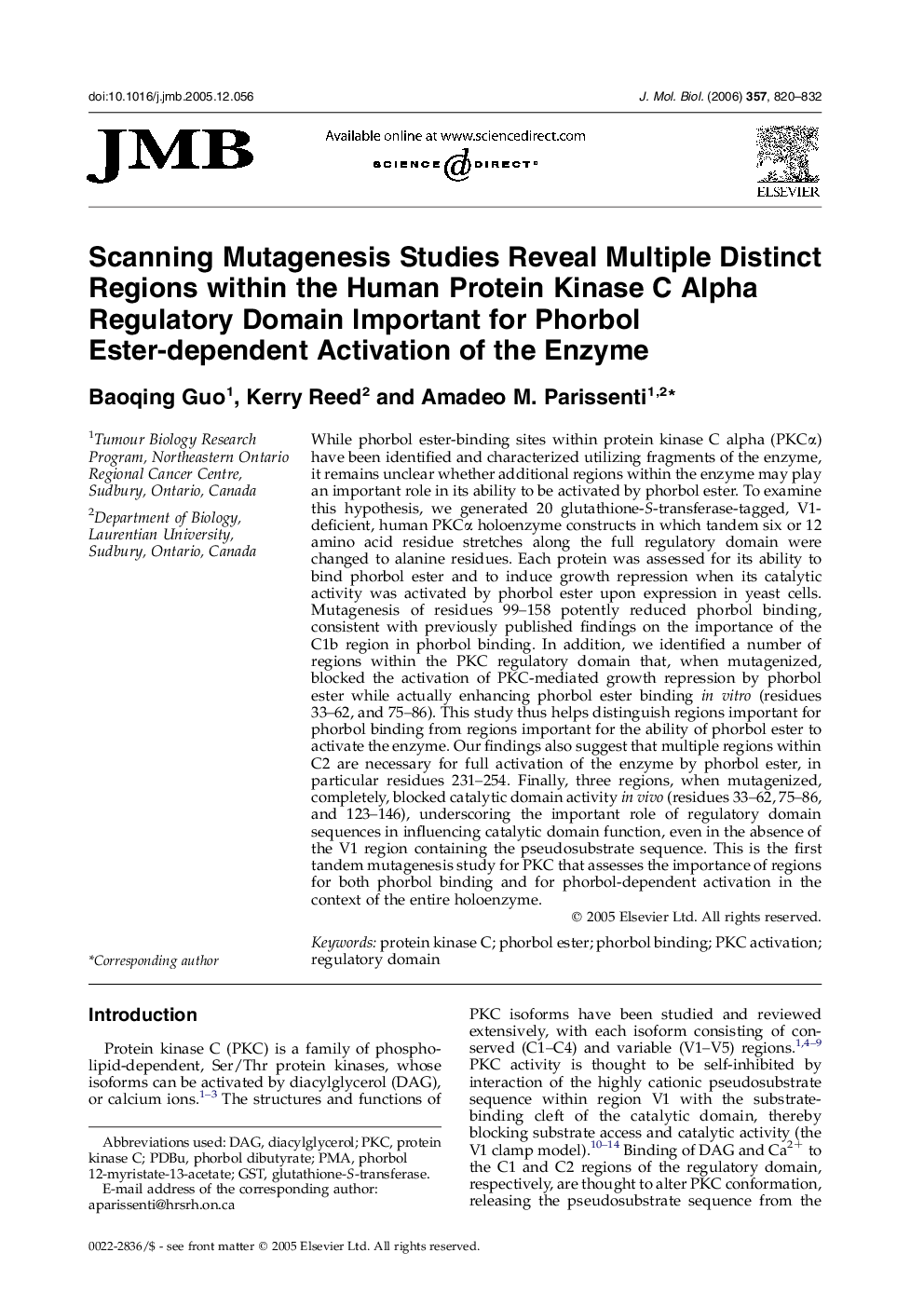| Article ID | Journal | Published Year | Pages | File Type |
|---|---|---|---|---|
| 2190042 | Journal of Molecular Biology | 2006 | 13 Pages |
While phorbol ester-binding sites within protein kinase C alpha (PKCα) have been identified and characterized utilizing fragments of the enzyme, it remains unclear whether additional regions within the enzyme may play an important role in its ability to be activated by phorbol ester. To examine this hypothesis, we generated 20 glutathione-S-transferase-tagged, V1-deficient, human PKCα holoenzyme constructs in which tandem six or 12 amino acid residue stretches along the full regulatory domain were changed to alanine residues. Each protein was assessed for its ability to bind phorbol ester and to induce growth repression when its catalytic activity was activated by phorbol ester upon expression in yeast cells. Mutagenesis of residues 99–158 potently reduced phorbol binding, consistent with previously published findings on the importance of the C1b region in phorbol binding. In addition, we identified a number of regions within the PKC regulatory domain that, when mutagenized, blocked the activation of PKC-mediated growth repression by phorbol ester while actually enhancing phorbol ester binding in vitro (residues 33–62, and 75–86). This study thus helps distinguish regions important for phorbol binding from regions important for the ability of phorbol ester to activate the enzyme. Our findings also suggest that multiple regions within C2 are necessary for full activation of the enzyme by phorbol ester, in particular residues 231–254. Finally, three regions, when mutagenized, completely, blocked catalytic domain activity in vivo (residues 33–62, 75–86, and 123–146), underscoring the important role of regulatory domain sequences in influencing catalytic domain function, even in the absence of the V1 region containing the pseudosubstrate sequence. This is the first tandem mutagenesis study for PKC that assesses the importance of regions for both phorbol binding and for phorbol-dependent activation in the context of the entire holoenzyme.
